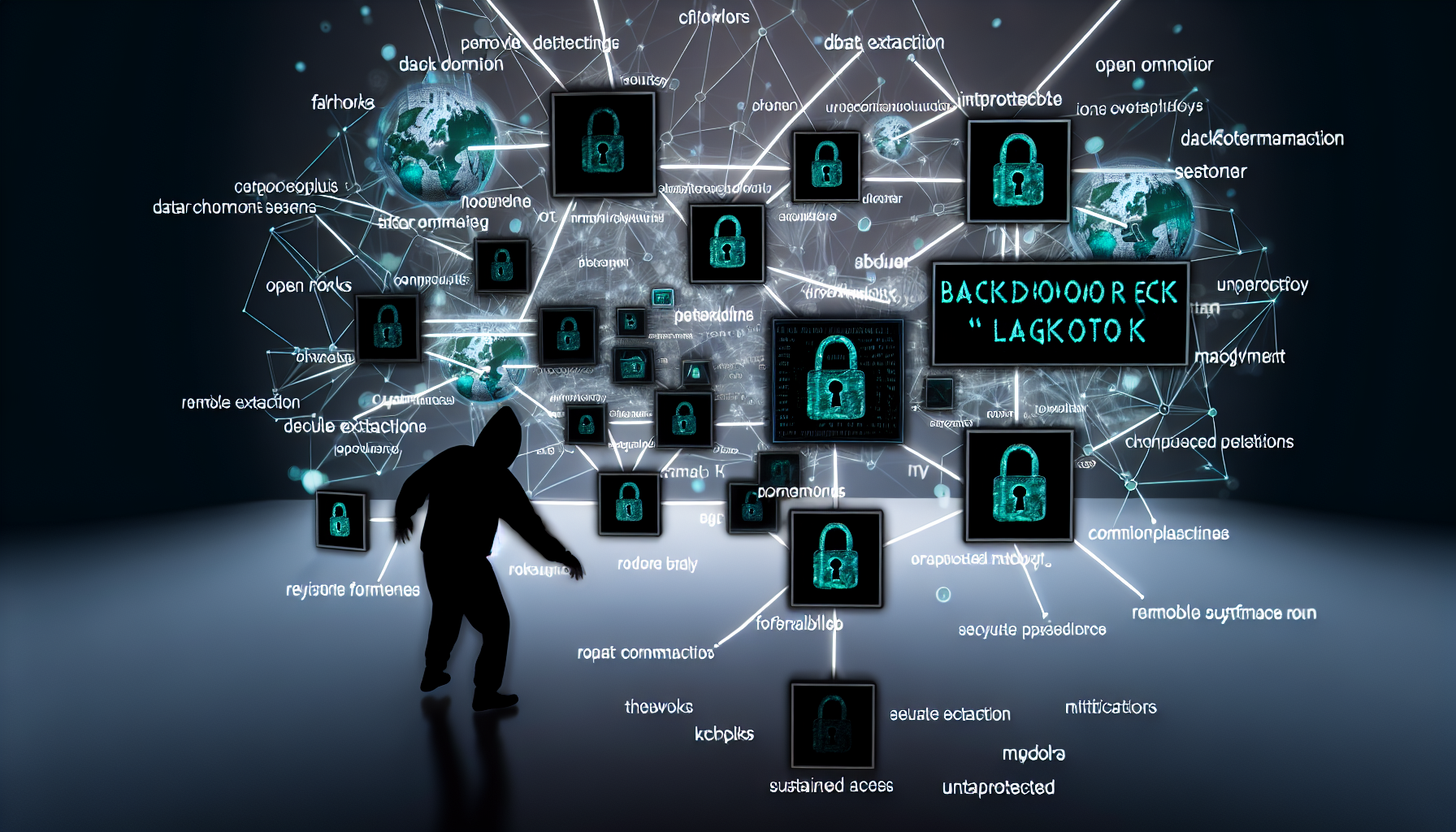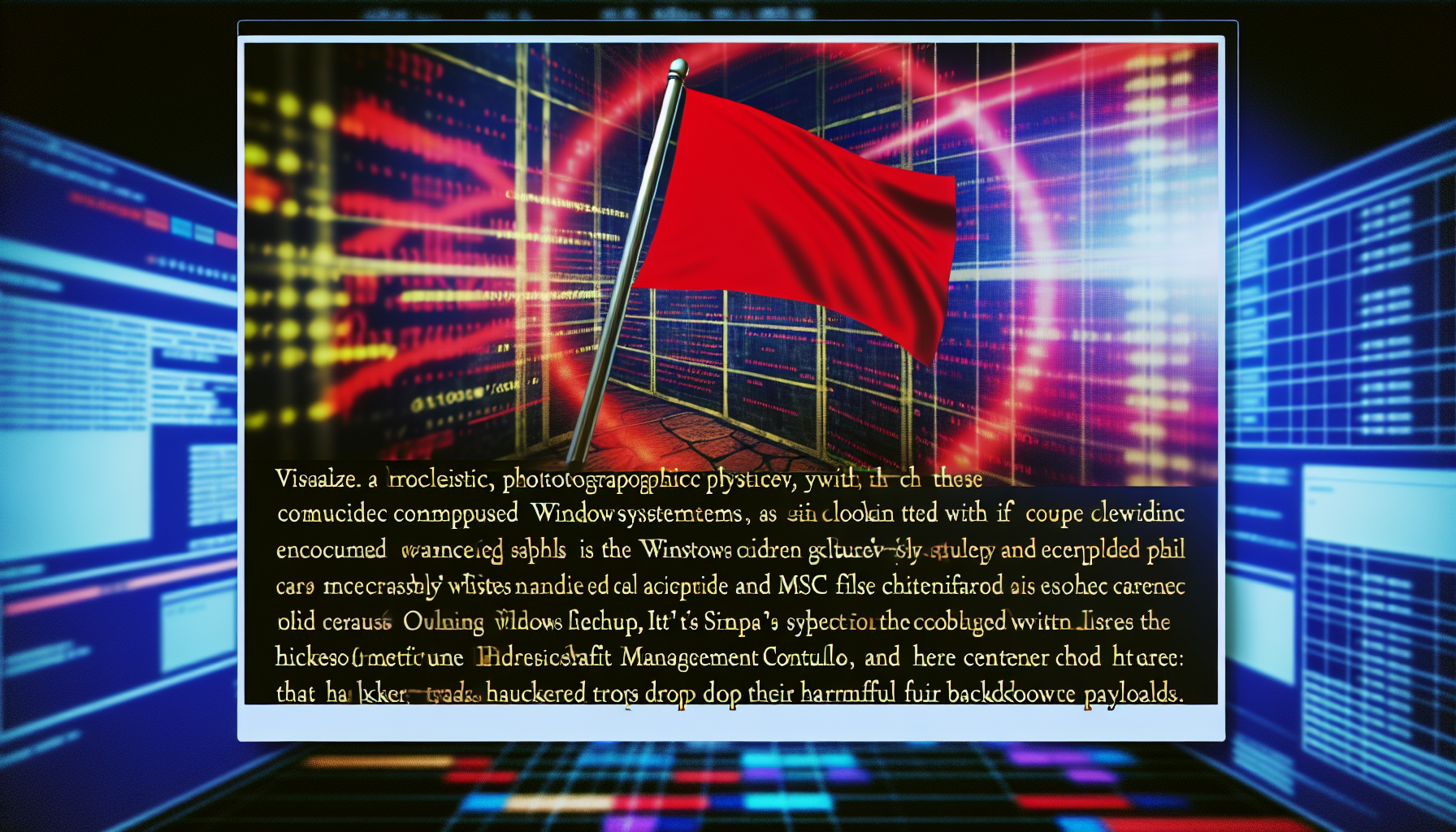Discover more from ESSGroup
Subscribe to get the latest posts sent to your email.

Hackers Use Microsoft Management Console to Deliver Malicious Payloads
As outlined in a recent threat report, hackers have been exploiting the Microsoft Management Console (MMC) to deliver backdoor payloads on Windows systems.
This sophisticated campaign employs advanced obfuscation techniques and Microsoft Common Console Document (MSC) files to evade detection.The attackers, believed to be nation-state actors, use the MMC to drop a stealthy backdoor payload that allows them to maintain persistent access to compromised systems.
The malicious activity is said to target organizations in various industries, including government agencies, financial institutions, and technology companies.
The hackers responsible for this campaign have demonstrated expertise in evasive techniques and persistence.
The attackers have leveraged various tools and infrastructure, including:
Some notable characteristics of this campaign include:
To mitigate the risks associated with this campaign, organizations can take the following measures:
The tactics employed by this actor group highlight the need for organizations to remain vigilant against emerging threats. It is essential to stay up-to-date with the latest threat reports, maintain robust security controls, and prioritize employee education and awareness.
Subscribe to get the latest posts sent to your email.
Lorem Ipsum is simply dummy text of the printing and typesetting
industry. Lorem Ipsum has been the industry's

Threat Overview
The cybersecurity landscape is constantly evolving, with new threats emerging regularly. One of the latest threats identified by AlienVault and Talos Intelligence is an initial access broker (IAB) dubbed ‘ToyMaker.’ This threat actor operates with financial motivations and exploits vulnerable systems exposed to the internet. The report, published on April 23, 2025, provides detailed insights into ToyMaker’s tactics, techniques, and procedures (TTPs), as well as recommendations for mitigating the associated risks.
Threat Actor Profile
ToyMaker is assessed with medium confidence by Talos Intelligence to be a financially motivated threat actor. This group specializes in gaining initial access to enterprise networks by exploiting vulnerabilities in systems that are exposed to the internet. Once they gain entry, they deploy their custom-made backdoor, named ‘LAGTOY,’ which allows them to extract credentials from the victim’s network.
The LAGTOY backdoor is a sophisticated tool designed for persistent access and control over infected endpoints. It can create reverse shells and execute commands remotely, enabling ToyMaker to navigate through the compromised network undetected. This level of access provides ample opportunities for data exfiltration, further malware deployment, and other malicious activities.
Threat Report Details
The report on ToyMaker is highly reliable, with a confidence level of 100% and a reliability rating of ‘A – Completely reliable.’ It includes 300 connected elements that provide a comprehensive view of the threat actor’s operations. The report also references external sources for additional information:
For a more detailed analysis, readers are encouraged to visit the Talos Intelligence blog post on ToyMaker.
Recommendations for Mitigation
Given the sophistication and persistence of ToyMaker’s tactics, organizations must adopt a multi-layered approach to cybersecurity. Here are some recommendations to mitigate the risks associated with this threat:
Strong Access Controls: Enforce strong access controls, including multi-factor authentication (MFA) and least privilege principles. Limit access to sensitive data and systems to only those who need it.
Intrusion Detection Systems (IDS): Deploy IDS to monitor network traffic for suspicious activities. Regularly update the IDS signatures to detect new threats like LAGTOY.
Employee Training: Provide regular cybersecurity training to employees to raise awareness about phishing attacks and other social engineering tactics that ToyMaker might use.
Incident Response Plan: Develop and regularly update an incident response plan. Ensure that all stakeholders are familiar with the plan and know their roles in case of a breach.
Regular Backups: Maintain regular backups of critical data and ensure they are stored securely offsite. This can help in quick recovery in case of a ransomware attack or data loss.
Threat Intelligence Sharing: Participate in threat intelligence sharing communities to stay informed about the latest threats and mitigation strategies. Collaborating with other organizations can provide valuable insights into emerging threats.
Conclusion
The emergence of ToyMaker highlights the need for vigilant cybersecurity practices. Organizations must remain proactive in identifying vulnerabilities, implementing robust security measures, and staying informed about new threats. By following the recommendations outlined above, businesses can significantly reduce their risk of falling victim to ToyMaker’s malicious activities. For more detailed information on ToyMaker and its TTPs, refer to the external references provided in this report.

Hackers Use Microsoft Management Console to Deliver Malicious Payloads.
As outlined in a recent threat report, hackers have been exploiting the Microsoft Management Console (MMC) to deliver backdoor payloads on Windows systems. This sophisticated campaign employs advanced obfuscation techniques and Microsoft Common Console Document (MSC) files to evade detection.
The attackers, believed to be nation-state actors, use the MMC to drop a stealthy backdoor payload that allows them to maintain persistent access to compromised systems. The malicious activity is said to target organizations in various industries, including government agencies, financial institutions, and technology companies.
The hackers responsible for this campaign have demonstrated expertise in evasive techniques and persistence.
Their tactics include:
The attackers have leveraged various tools and infrastructure, including:
Some notable characteristics of this campaign include:
To mitigate the risks associated with this campaign, organizations can take the following measures:
The tactics employed by this actor group highlight the need for organizations to remain vigilant against emerging threats. It is essential to stay up-to-date with the latest threat reports, maintain robust security controls, and prioritize employee education and awareness.
Resources:

In the ever-evolving landscape of cyber threats, staying informed about new and emerging risks is crucial for maintaining robust security measures. A recent threat report published by CyberHunter_NL on March 18, 2025, provides a comprehensive analysis of StilachiRAT, a sophisticated malware designed to conduct system reconnaissance and ultimately steal cryptocurrency. This report offers valuable insights into the tactics, techniques, and procedures (TTPs) employed by this threat actor group, as well as recommendations for mitigation.
StilachiRAT is a multifaceted Remote Access Trojan (RAT) that has been observed in various cyber attacks aimed at compromising systems and siphoning off cryptocurrency. The malware operates through a series of meticulously planned stages, beginning with initial access and culminating in the exfiltration of valuable digital assets. This report delves into each phase of the attack lifecycle, highlighting key indicators of compromise (IOCs) that security professionals can use to detect and respond to potential threats.
The threat actor group behind StilachiRAT is known for its advanced capabilities in system reconnaissance. By leveraging various tools and techniques, they are able to gather detailed information about targeted systems, including network configurations, user activities, and security measures. This intelligence allows them to tailor their attacks with precision, increasing the likelihood of success.
One of the most concerning aspects of StilachiRAT is its ability to remain undetected for extended periods. The malware employs sophisticated evasion techniques, making it difficult for traditional security solutions to identify and neutralize the threat. However, by understanding the TTPs associated with StilachiRAT, organizations can implement proactive measures to enhance their defenses.
The report provides a detailed analysis of the reconnaissance phase, where StilachiRAT collects data on system vulnerabilities, user credentials, and network topology. This information is then used to plan subsequent attacks, which often involve lateral movement within the compromised network. By mapping out the internal infrastructure, the threat actors can identify high-value targets and exploit them efficiently.
In addition to its reconnaissance capabilities, StilachiRAT excels in cryptocurrency theft. The malware is designed to steal digital wallets and private keys, enabling the attackers to transfer funds to their own accounts. This form of cybercrime has become increasingly prevalent, as cryptocurrencies offer a high-value target with the potential for significant financial gains.
To mitigate the risks posed by StilachiRAT, organizations should implement a multi-layered security approach. This includes deploying advanced threat detection and response solutions, conducting regular security audits, and providing comprehensive training to employees on cybersecurity best practices. Additionally, implementing strong access controls and encryption can help protect sensitive data from unauthorized access.
The report also emphasizes the importance of collaboration within the cybersecurity community. By sharing information about emerging threats and TTPs, organizations can collectively enhance their defenses and reduce the impact of cyber attacks. Security professionals are encouraged to review the full report and incorporate its findings into their security strategies.
In conclusion, StilachiRAT represents a significant threat to organizations, particularly those involved in cryptocurrency transactions. By understanding the tactics employed by this malware and implementing robust security measures, organizations can better protect themselves against potential cyber attacks. The report published by CyberHunter_NL serves as a valuable resource for security professionals seeking to stay ahead of evolving threats.
For additional information on StilachiRAT and its associated TTPs, please refer to the external references provided in the report: https://otx.alienvault.com/pulse/67d9947e6abd47d2789ec16b and https://www.microsoft.com/en-us/security/blog/2025/03/17/stilachirat-analysis-from-system-reconnaissance-to-cryptocurrency-theft/.

Subscribe now to keep reading and get access to the full archive.